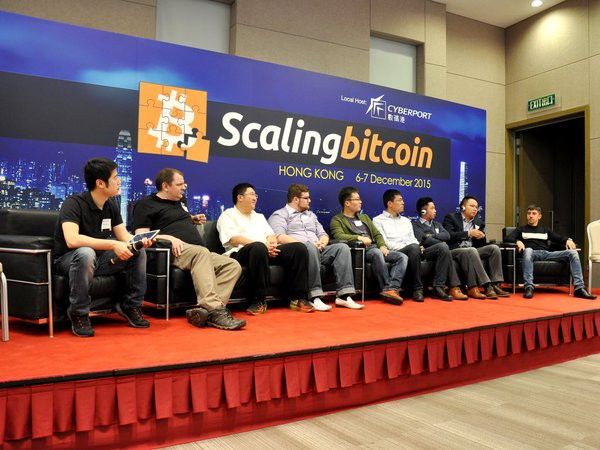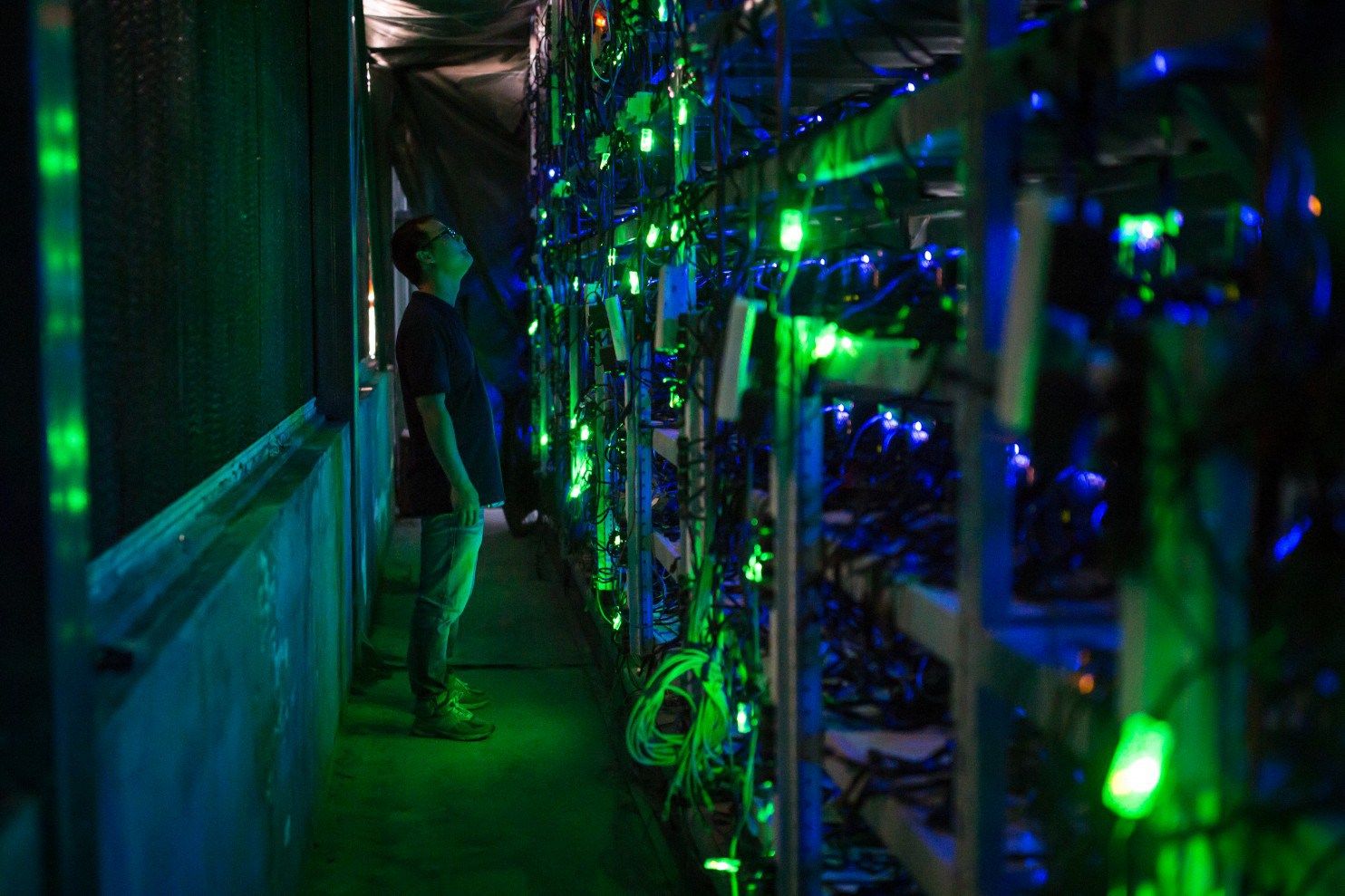Blockchain, degeneration of an ideal
For the 9 past years, the blockchain trend has continued to grow. Yet, we are still waiting for a cryptocurrency to take over our financial institutions, as was expected. And for a good reason: it suffers from an internal governing crisis, preposterous energetic consumption and a burst in investments that have turned it into an economic bubble.
Bitcoin, the cryptocurrency that introduced Blockchains, turns nine today. On October 31, 2008, Satoshi Nakamoto published a paper entitled ”Bitcoin : a peer to peer electronic cash system”. This paper introduced a potential revolution : the collapse of the current financial intermediaries — such as banks or states. In the midst of the economic crisis, this idea understandably aroused certain interest — be it to avoid excessive fees or to escape surveillance.
Since then, the trend has grown exponentially. There are almost 900 cryptocurrencies, accounting for a market capitalization of $160Mds.
Still, the revolution so sought after has yet to come to fruition. While it’s a rare feat of technological ingenuity, Blockchain suffers from crippling limitations as soon as it wriggles its way out of the idyllic world of theory.
The decentralisation illusion
Blockchain doesn’t magically disappear the need for intermediaries. Rather, it dilutes it throughout the network with the help of cryptography.
To authenticate any given transaction between two peers, a small competition with a financial reward must first take place. This means that in order to cheat, a node would have to overtake all the other nodes within the network.
In such a way, Blockchain has replaced an intermediary whose incentive was based on its reputation with a network of peers whose honesty is mathematically ensured. In both cases, the dominant position of a monopoly would allow for cheating, but only at the price of the collapse of the network on which it was built. However, in practice we run into another problem.
The chinese oligocracy
A whole parallel market has spread on top of these competitions. Companies have invested in specific hardware in order to keep up with the competition and profit from the financial rewards.
Why has Bitcoin failed? It has failed because [it became] a system completely controlled by just a handful of people
— Mike Hearn - The resolution of the Bitcoin

The majority of the network mining power is concentrated in China (58%), and managed by a handful of companies. The 6 most important account for 75% of the mining power. In the case of a governing crisis, this oligocracy has the power to influence the outcome of major decisions.
And it has already happened, over the SegWit2x dispute. Due to its growth, the bitcoin network hit a saturation ceiling around 5 transactions per second. Different solutions were bounced back and forth, but for some reason, the main mining companies ignored them.
In theory, blockchain — with its vow to decentralize and operate with open governing — seems to be a favorable alternative to opaque and obsolete institutions. In practice, however, it appears difficult to ensure the majority’s participation in governing. In the end, it’s a minority that takes charge, increasing the chances of abuse of power.
With that being said, we can’t help but support this huge step towards openness and transparency, by mining bitcoins at home, to restore the balance in this power distribution.
As long as we ignore the outrageous ecological footprint.
The energetic absurdity
The mining competitions are based on energy intensive computations — the Proof-of-Work — needed to prevent the double-spending problem. This is when a malevolent user, after spending some Bitcoins, wishes to modify or cancel transactions in order to spend them again.
To resolve this problem, the integrity of the blockchain is ensured by linking the transaction blocks one after another. Each block contains the signature — or hash — of the preceding block. If a block were modified, its signature would change. And because it sits inside the next bloc, the latter would also change. And so too, would all the following blocs. To generate a new block, the nodes use their mining power to compete with each other. While a malevolent miner is busy forging blocks to catch up with the current chain, all the other miners are simultaneously linking new blocks to it.
To generate a new bloc, the nodes use their mining power to compete with each other. While a malevolent miner is busy forging blocs to catch up with the current chain, all the other miners are linking new blocs to it.
Because it’s the longest chain that obtains consensus, a transaction is only valid once its block is followed by enough blocks to ensure it won’t be discarded for a longer chain. So long as the malevolent user doesn’t hold more than 51% of the mining power, they don’t stand a chance of deceiving the network.
An ecological footprint comparable to a country
This computation competition, difficult by necessity, requires a tremendous amount of energy. We are talking about 23.82TWh to validate less than 5 transactions per second. That’s equivalent to the electricity consumption of more than 2 million US households, or that of a country like Nigeria.
A Bitcoin transaction is about 4000 to 5000 times more energy intensive than a VISA swipe. — Christopher Malmo — Motherboard

Unmistakably, the more miners there are, the more considerable the energy consumption is. But — and here lies the absurdity of the situation — this consumption is completely independent of the number of transactions. The protocol artificially adjusts the difficulty of the competition by taking into account the total mining power, in order to keep up a rhythm of a new block generated every 10 minutes.
Bitcoin’s energy consumption is not correlated to the number of transactions, but is only driven up by the equipment race between miners.
With that being said, this problem is already well known, and several alternatives have since popped up. One of them involves competing around useful computation, such as the discovery of prime numbers (Primecoin) or protein folding (Curecoin). However, these alternatives are inherently limited due to the fact that it is necessary to adjust the difficulty of the competition to keep a constant pace of bloc generation.
Another alternative is to ensure the integrity of mining nodes without the use of computation : the Proof-of-Stake. To ensure its integrity, a node transfers a security deposit in exchange for the right to validate transactions and mine a new block. If the node is found guilty of cheating, it forfeits its deposit, and ”its house burns down“.
A few cryptocurrencies have already adopted the Proof-of-Stake, the first being Peercoin, as well as various research projects like Algorand (publication). Ethereum, the second biggest cryptocurrency, is also actively working on adopting it with the Casper proposition.
An economic bubble
Ethereum has introduced what it calls Smart Contracts that certify a wider range of procedures, including but not limited to simple monetary transactions.
 The ethereum team](/mHzImJWFim-1024.jpeg)
Say you rent your flat for the weekend on an Airbnb clone based on blockchain technology : a decentralized application (DApp). Once your tenants have paid their stay, your electronic wallet notifies your connected door lock so that it opens your flat for the weekend, as agreed.
A Smart Contract links the monetary transaction — the rent — to the automatisation of the compensation — opening your door. Once again, without intermediaries as the execution is distributed on the miners network.
ICO gone wild
The recent trend for these DApps involves raising money with an Initial Coin Offering (ICO) — inspired by the Initial Public Offering (IPO). This trends, currently valued at $2Mds (2017), exceeds traditional venture capital. During an ICO, a DApp emits its own currency for later use on the service. It allows investors to support promising projects in exchange for discounted prices.
The recent trend for these DApp is to raise money with an Initial Coin Offering (ICO) — inspired by the Initial Public Offering (IPO). This trends is valued at $2Mds in 2017, and exceed traditional venture capital. During an ICO, a DApp emits its own currency for later use on the service. It allows investors to support promising projects in exchange for discounted prices.
The biggest ICO until now, Filecoin ($257m), Tezos ($232m) and Bancor ($153m), raised sums similar to those of the biggest fundraisers. Nevertheless, there is no contractualization. Admittedly these three projects seem promising, but not all projects exhibit the same level of maturity. With ICOs being public, potential investors aren’t necessarily able to accurately evaluate the risk they are undertaking.
To illustrate the excessiveness of ICOs, The Memessenger, a messaging service using stickers instead of words, raised $400K. No relation to blockchain technology, they only needed money.
Only one in 10 tokens is in use following initial coin offerings, the rest can only be traded, and are purely speculative instruments.
— Olga Kharif — Bloomberg
Are we allowed to speak of an economic bubble yet, or do we need to witness a whole family to sell all its belongings, including its house, to speculate on the cryptocurrency ? Oh, wait …
Societal impacts
Though not always totally justified, this extreme enthusiasm is relatable. We can’t help but admit that Blockchain displays a rare engineering elegance.
Unlike numerous decentralized systems, Blockchain projects wouldn’t survive a sustained network outage. But this concession is barely noticeable as this possibility seems so inconceivable. In fact, the genius of Blockchain stems precisely from this premise it’s the fact that these transactions occur around the clock that ensures their integrity.
This property is irreducible to its components — internet and cryptography — and therefore represents an emergence, in the philosophical meaning of the term. It’s is truly marvelous.
Still, this technological singularity seems to steal all the excitement, completely outshining the real difficulty that Blockchain-based applications will eventually encounter : the alignment of economic incentives.
“‘Incentives are the hardest thing to do,’ said Silvio Micali, 2012 Turing Award laureate and creator of Algorand. In 30 years as a cryptographer, he had spent the last 10 working on just that issue.”
Nobody predicted the outbreak of the mining market. The competition rewards were only an economic incentive to keep the network functioning, and in no case a business opportunity. Yet, it has developed into a market that generates around $10m a day.
This gold rush seems to be the source of most of Bitcoin’s troubles, and more broadly those that Blockchain faces today. We can’t help but feel a bit of bitterness while witnessing the greed of these companies completely degenerating the original nature of the movement.
Considering the magnitude of the trend, if Blockchain is to reorganize the social landscape, as expected, it seems crucial to focus primarily on this problem of economic interests alignment.